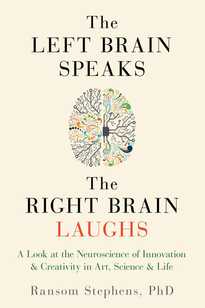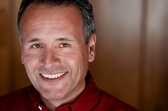|
I hope that New Year's Eve ushers in a year of happiness, health and prosperity for you and your family. Looking back on the previous year, 2016 has been an interesting one. There's been a ton of turmoil around the world and in the news. Of course at the end of most years we look back and see all the things that were 'wrong' with it and wonder what we can do better. According to an article titled 'Why We Make New Year's Resolutions' written by Margarita Tartakovsky, M.S. for PsychCentral, we like resolutions because it's as though we are starting with a clean slate. Our past, including our weaknesses or short-comings, are magically erased and we get to try to be our best selves. Have you thought about your goals yet? First you have to decide what your goals will be. Then of course is the implementation of those goals. How do we do that? By making sure that they are SMART goals. What's It Stand For? There are several versions but the one that I like the best is:
What does this all mean? When evaluating your goals, to help make them easier to reach it's best to make them SMART. Specific: The first part of making a goal is to be specific. Answer these questions:
Measurable: The second part is to set up a way to measure your goal in progress.
Achievable: A goal can and should stretch your skills. As you look at your goal see if you need to develope
Realistic: Make sure that your goal is something that you want to work for and that you have the ability to complete it.
Time-Based: Make sure to give yourself a deadline. Someday has no sense of urgency.
If you'd like to use a helpful interactive tool to help make sure that your goals are SMART, check out AAHA's SMART Goals. It will even give you tips based on questions you answer for each part of SMART. Some helpful websites include Top Achievement and Wikipedia. Here Are My SMART Goals for 2017 I feel pretty fortunate that both professionally and personally I was able to accomplish some pretty lofty goals in 2016. I was able to complete my first draft of my novel Luminata and I obtained my specialty certification in my profession. I used the SMART system for these and it works for me. I also like taking big goals and breaking them down into easy to digest chunks.
Of course, there are new goals in my life that I hope to take on in 2017. Some are related to my writing and others are for my professional life. Here's my list of goals:
These goals seem pretty lofty to me, but then again, I like to push myself. So, what are your goals for 2017?
3 Comments
Laugh, Cry and Lose Sleep  Click on the image to find on Amazon Click on the image to find on Amazon On Saturday December 17 the Tri-Valley Writer's hosted Ransom Stephens Ph.D.. Dr. Ransom Stephens is a physicist as well as a novelist. He presented his newest novel The Left Brain Speaks but the Right Brain Laughs. Ransom is an engaging speaker. He makes references to AC/DC and even the Raiders, so you know he's not your average stuffy old physicist that's going to be sharing word's of wisdom. Ransom reminded us that our job as writers can be difficult. We need to help our readers laugh, cry and lose sleep. Honestly one of my favorite problems is when I loose sleep reading a novel that I just can't put down. I'd love to be able to make someone loose sleep over my characters and their adventures. Why Knowing How Our Brains Work Helps Ransom was a physics professor, so the science part of art is near and dear to his heart. He started off stating that what we've previously been taught about the left and the right brain is not necessarily accurate. He described how both halves of the brain work together to create stories. Of course we've all heard the "show your readers don't tell them" rule. Ransom presented that as a writer it is our job to provide just the right amount of information for our readers to create their version of your world in their minds. Give just enough information for their brains to fill in the blanks and they see and feel what happens to the characters. Being able to create characters that evoke emotions for readers helps build a relationship with them. There have been studies showing that when we read our brains react the same way as if we are experiencing what is happening in the stories ourselves. That's why showing is so much more compelling for the reader, their brains get to experience it and internalize it. There's a good article how our brains react to both written and visual stories by Paul Zak's entitled 'How Stories Change the Brain'. Animals, including humans, thrive on a feed back loop. Typically we like positive feed back loops. A feedback loop can be something as simple as: when I'm hungry my stomach hurts so I eat and then that feeling goes away and I like it. Therefore eating makes me feel good. NeuroaestheticsA relatively new scientific discipline is neuroaesthetics, or how the brain interprets art, beauty and creative works. This is something that writers have intuitively known about for centuries and Ransom looks at from the point of view as both a scientist and a novelist. Learning the tricks of our trade is like learning about neuroaesthetics. Ransom discussed creating a sense of isolation, pacing and even orderliness to help story and a writer accomplish their goals. One of the tricks in a novelists arsenal is to ratchet up the tension for the characters as well as for our readers. Ransom equates giving small pieces of information at appropriate moments as 'a strip tease'. We show enough for our audience to want more and pique their interests. Speaking of a 'strip tease' there is much more in The Left Brain Speaks but the Right Brain Laughs and I highly recommend it for anyone that is interested in neuroscience or for writers who are looking to get inside the minds of their readers. Thanks for reading. I hope everyone has a good holiday and I'll talk to you next week. About Ransom Stephens  Ransom Stephens is a former physics professor and fifth-generation Californian. He spent 15 years conducting cutting-edge particle physics research and taught at the University of Texas at Arlington. He then moved into high-tech to work for a wireless web start-up. He’s now a Silicon Valley consultant, novelist, and science writer. His new book, The Left Brain Speaks but the Right Brain Laughs looks at the neuroscience of innovation and creativity in art, science, and life. His novels, The God Patent and The Sensory Deception, also draw on his scientific work. He lives in Petaluma, California. Visit his website for more information. The Left Brain Speaks but the Right Brain Laughs is published by Viva Editions and can be found on Amazon. |
Let Magical Adventures Find You!Blog Archives
February 2019
Categories
All
|



 RSS Feed
RSS Feed
